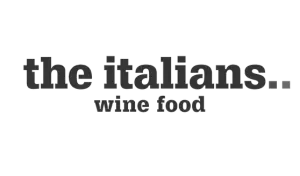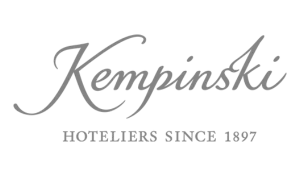Online reservation systems have completely changed how restaurants and hotels handle bookings, and the pressure to keep up has never been higher. Most businesses still rely on manual tracking or outdated forms, and over 60% of customers now prefer making reservations online. Yet, despite this trend, many owners are still struggling with systems that cause more headaches than help. Here is the surprising bit. Even small tweaks to your current process could reveal hidden opportunities for smoother bookings and happier guests.
Quick Summary
Key Point | Explanation |
|---|---|
Evaluate your current booking system | Assess your reservation processes to identify strengths and weaknesses before integration. |
Choose the right reservation platform | Select a platform that aligns with your business size and specific operational needs to optimise bookings. |
Ensure seamless website integration | Configure your website for a smooth reservation experience, ensuring it aligns visually and functionally. |
Implement the reservation tool effectively | Focus on user-friendly integration, maintaining your website’s design and responsive functionality. |
Continuously monitor and optimise | Regularly analyse user metrics and gather feedback for ongoing improvements to the booking experience. |
Evaluate your existing booking system
Successfully integrating a website reservation system begins with a thorough assessment of your current booking infrastructure. This critical first step helps you understand precisely what works, what needs improvement, and how prepared your business is for a seamless digital transformation. Start by mapping out your existing reservation processes in comprehensive detail. Examine every touchpoint of your current system: how customers make bookings, how staff manage those reservations, and what tools or platforms you currently use. Manual tracking through spreadsheets, phone bookings, or basic online forms are signs that you need a more robust solution. To conduct a comprehensive evaluation, gather data on your current reservation workflow. Track metrics like average booking time, no-show rates, manual administrative hours spent on reservation management, and customer satisfaction levels related to your booking experience. Check out our guide on restaurant management systems to understand how technology can streamline these processes.
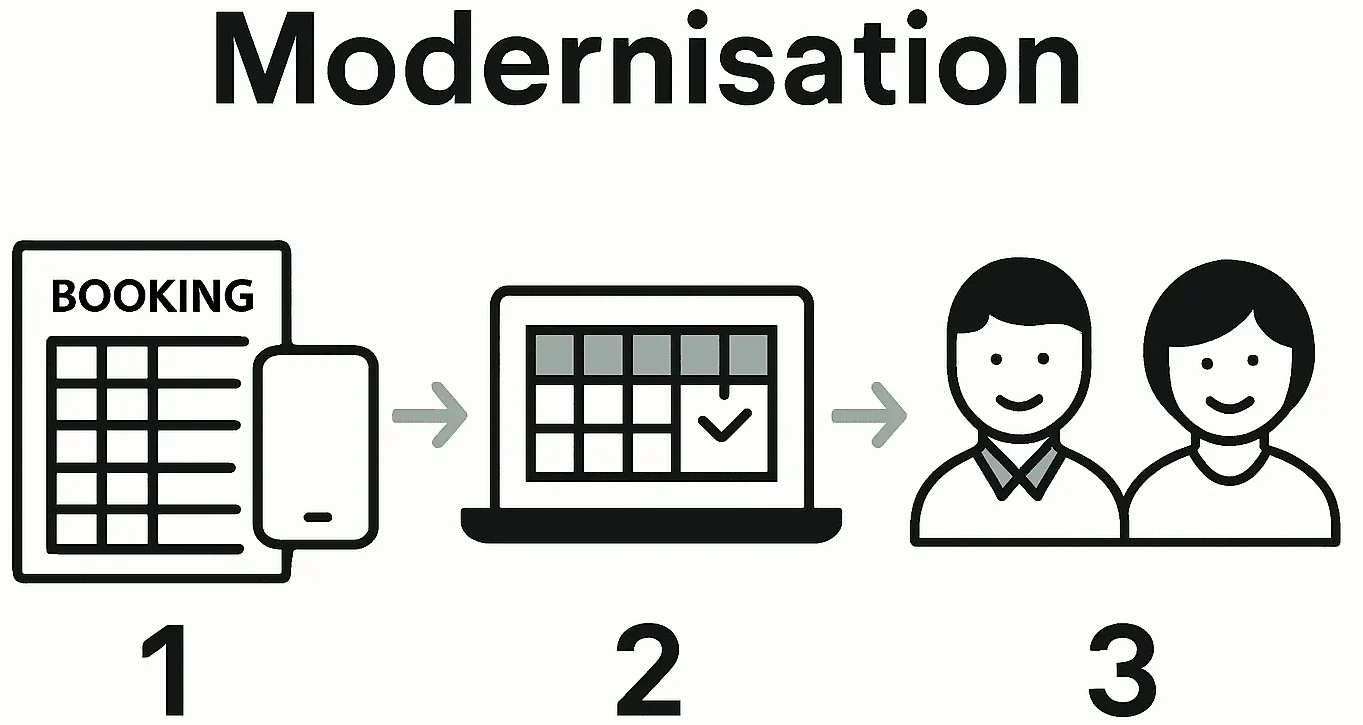
Key assessment areas include understanding your current system’s limitations. Do you struggle with:
Tracking multiple booking channels simultaneously
Managing walk-in and online reservations effectively
Preventing no-shows and late cancellations
Providing real-time table management
These challenges indicate that your current system might be holding your business back. A detailed evaluation reveals not just problems, but opportunities for significant operational improvements. By documenting your current processes meticulously, you create a clear blueprint for selecting the right website reservation integration solution that aligns perfectly with your business needs
Choose an appropriate reservation platform
Selecting the right reservation platform is a pivotal moment in your website reservation integration journey. This step transforms your understanding of current limitations into a strategic solution that will reshape how your business manages bookings and guest interactions. Not all reservation platforms are created equal. Your choice must align precisely with your business type, size, and specific operational requirements. Begin by comparing platforms that specialise in your specific hospitality sector. Explore our comprehensive guide to restaurant reservation systems to understand the nuanced differences between platforms. Consider critical features that go beyond basic booking functionality. Look for platforms offering robust integration capabilities, real-time synchronisation across multiple channels, comprehensive guest management tools, and flexible reporting mechanisms. Your ideal platform should reduce administrative burden while simultaneously enhancing customer experience.
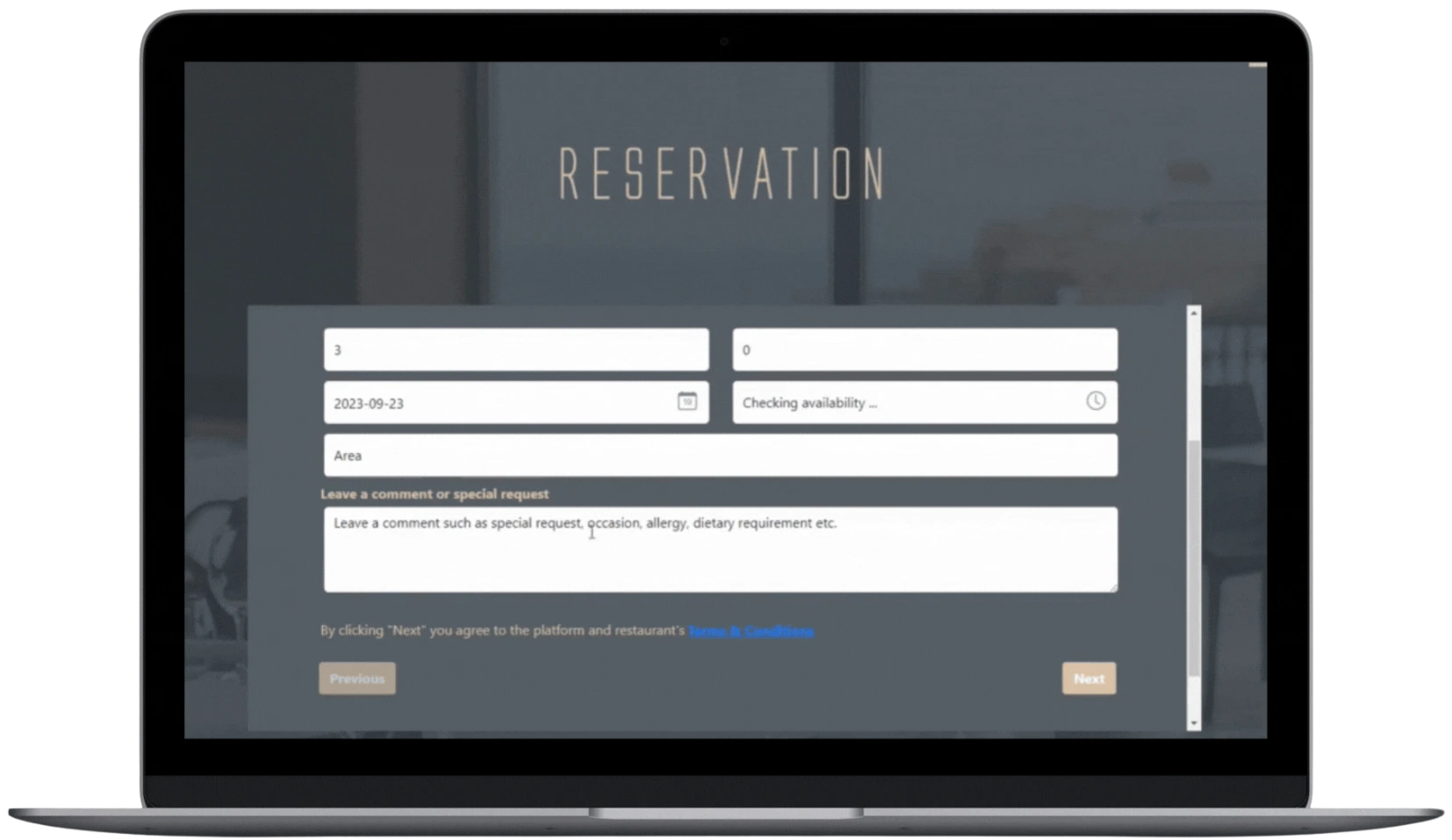
Configure your website for integration
Website reservation integration transforms your online presence from a static information page into a dynamic, interactive booking platform. This crucial step connects your chosen reservation system directly with your website, creating a seamless experience for potential customers. Technical preparation is key to successful integration. Begin by examining your current website infrastructure and identifying the most suitable integration method. Learn more about restaurant website management strategies to ensure a smooth implementation process. Most reservation platforms offer multiple integration options. These typically include embedding booking widgets, using custom booking buttons, or implementing full API integrations. Your choice depends on your technical comfort level and website structure. WordPress sites often provide plug-in solutions, while custom websites might require more advanced coding approaches.
Key configuration steps involve:
Generating unique integration tokens from your reservation platform
Identifying appropriate widget or API placement on your website
Testing booking functionality across different devices
Ensuring visual consistency with your existing website design
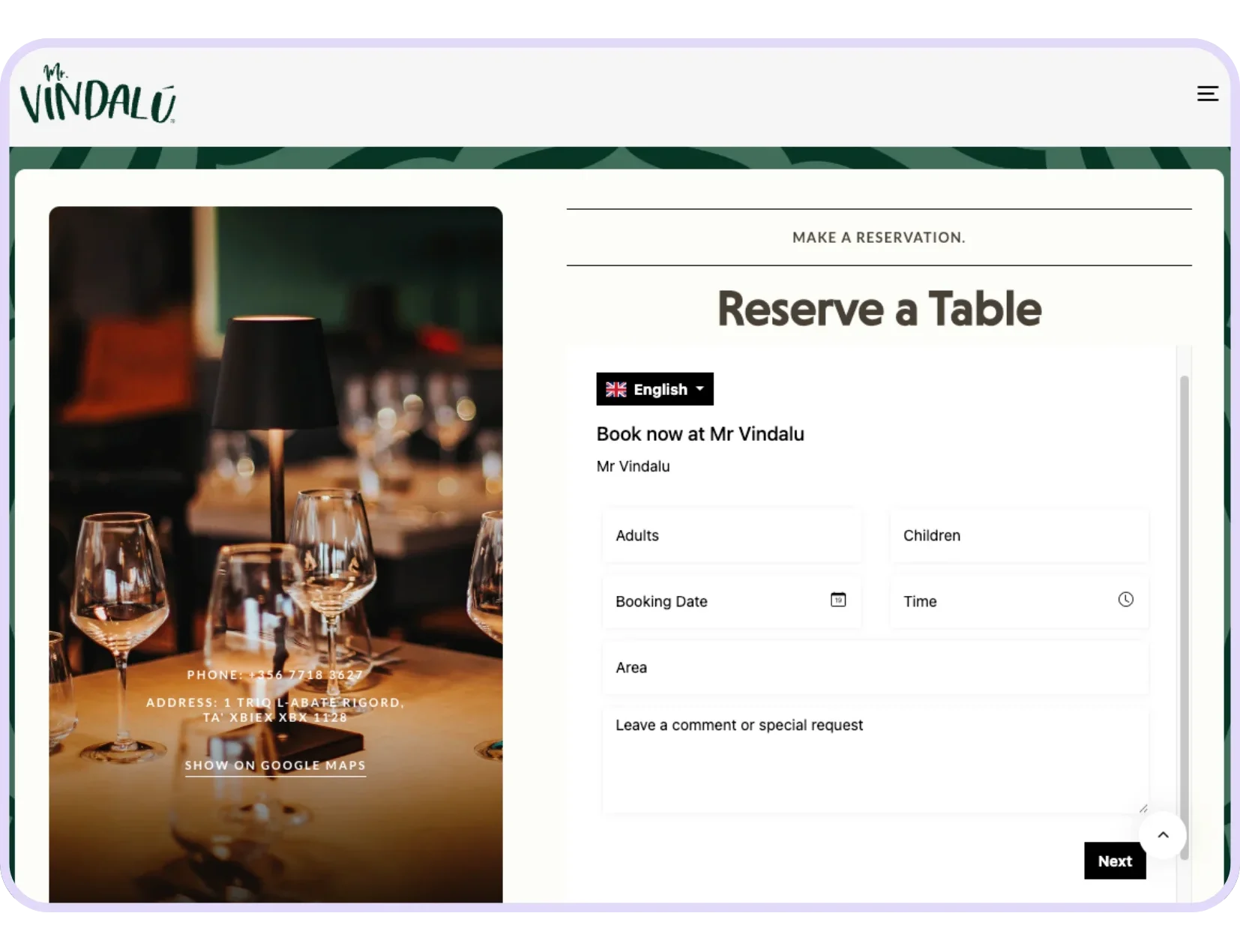
Monitor and optimise the booking experience
Optimising your booking experience is an ongoing process that transforms initial implementation into a continuously improving system. This final step ensures your website reservation integration remains dynamic, responsive, and aligned with evolving customer expectations. Learn more about crafting effective reservation confirmation strategies to enhance your overall booking approach. Continuous monitoring is the key to long-term success. Implement robust analytics tools that provide deep insights into your booking workflow. Track critical metrics such as conversion rates, average booking time, user drop-off points, and overall user engagement. These data points reveal the subtle nuances of your customers’ booking experiences. Regular performance analysis allows you to identify and address potential friction points in your reservation system. Pay close attention to user behaviour patterns. Are customers abandoning bookings at specific stages? Do certain device types experience more challenges? Understanding these details enables targeted improvements that directly enhance user experience. Key optimization focus areas include:
Reducing booking completion time
Simplifying reservation form fields
Improving mobile responsiveness
Enhancing user interface design
Streamlining payment processing
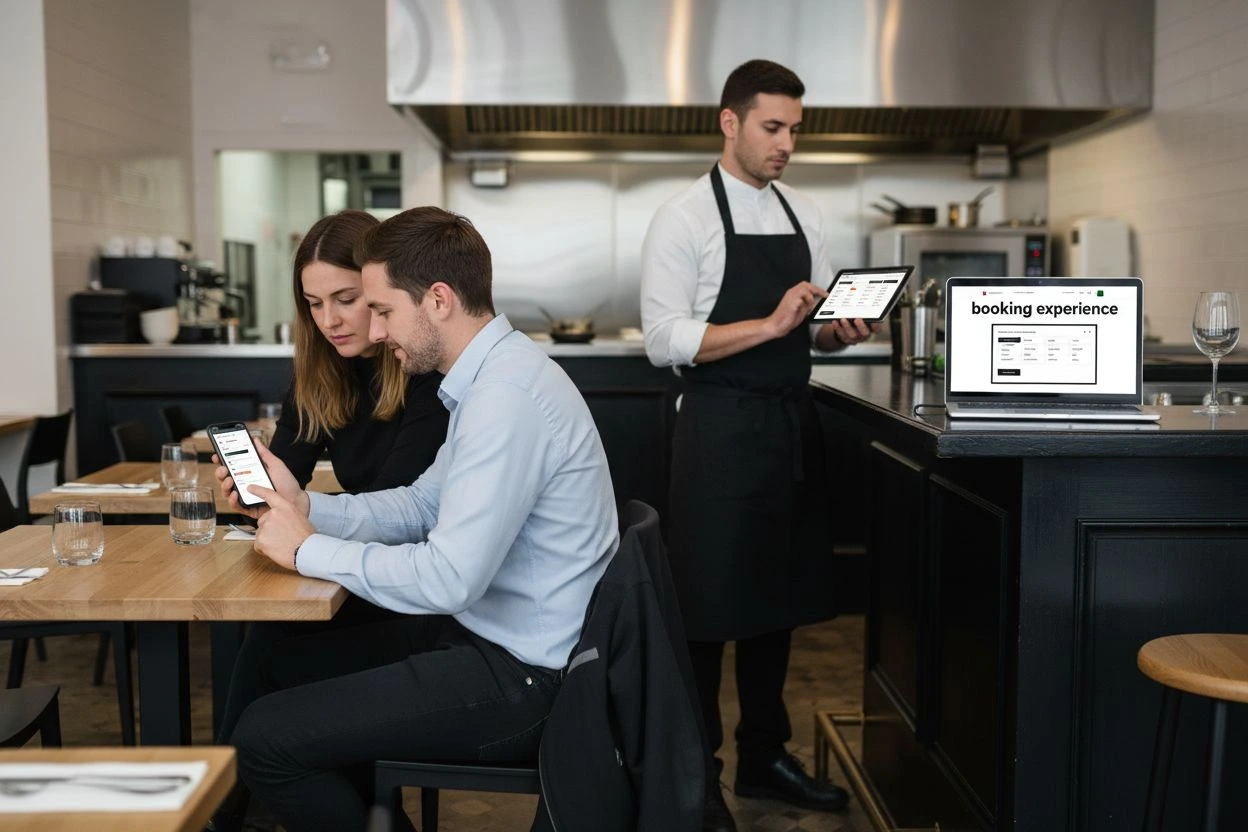
Customer feedback becomes an invaluable resource during this optimization phase. Actively solicit input through short surveys, feedback forms, and direct communication channels. Listen carefully to both positive comments and constructive criticism. Real-world user experiences often highlight improvement opportunities that automated analytics might miss. Technical performance remains equally crucial. Regularly check system response times, verify integration stability across different platforms, and ensure your reservation tool maintains robust security standards. Schedule monthly or quarterly comprehensive reviews to assess overall system health and identify potential upgrades or refinements. Successful optimization is characterized by continuous incremental improvements. Your booking system should feel increasingly intuitive, faster, and more user-friendly with each iteration. The goal is creating a reservation experience so seamless that customers hardly notice the technological complexity behind their booking process.
Transform website booking in seamless guest experience
If you have ever felt overwhelmed by clunky reservation systems, missed bookings, or the frustration of no-shows, you are not alone. Many food service businesses struggle to integrate their website reservations smoothly, risking lost revenue and poor guest impressions. The article highlighted the importance of evaluating your booking setup, choosing the right platform, integrating easily, thoroughly testing, and optimising the guest journey. A unified solution makes the difference between wasted administrative hours and a thriving reservation pipeline. Seize the chance to elevate your business. Discover how Tableo can streamline your entire booking process with digital floor plans, automated guest messaging, customised booking forms, and seamless payment integrations. Take action now and turn your website into a powerful conversion tool for more bookings and happier guests.
Frequently asked questions
To assess your current booking system, start by mapping out the entire reservation process, from customer bookings to staff management. Collect data on metrics such as average booking time and customer satisfaction to identify areas needing improvement and create a clear roadmap for your new integration.
Begin by examining your website’s structure to determine the best integration method, whether through widgets or API. Ensure that you generate the necessary integration tokens and test the booking functionality for a smooth user experience across different devices.
When selecting a reservation platform, prioritise key features like seamless website integration, mobile responsiveness, and comprehensive guest management tools. Evaluate platforms based on their ability to manage multiple booking channels and provide advanced reporting to streamline your operations.
Implement robust analytics tools to monitor key metrics such as conversion rates and user engagement. Regularly gather customer feedback and focus on making incremental improvements to reduce booking completion time and enhance user interface design.
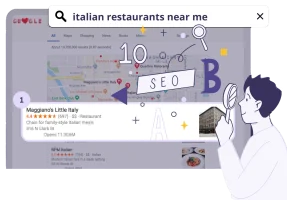
Unlock the tips that will help you stand out from the crowd and get more bookings!

Learn how to save time, reduce stress and fill your restaurant while you sleep!







